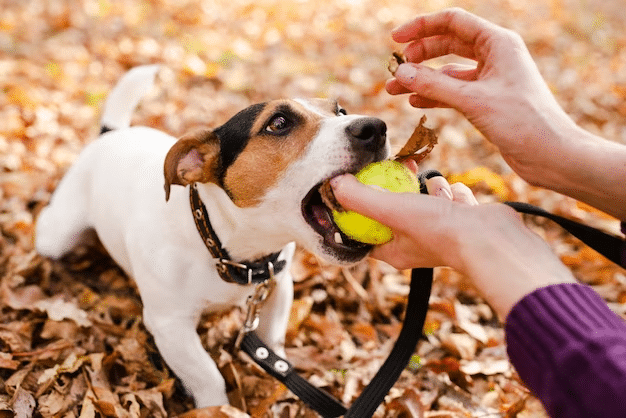Can Dogs Eat Quince?
Yes, dogs can safely eat cooked quince in moderation. Quince is a nutritious fruit with several potential benefits, but it is essential to be aware of the risks and prepare it properly before offering it to your furry friend.
Benefits of Quince for Dogs
- Rich in Vitamins and Minerals: It contains vitamin C, potassium, and copper, which support immunity, healthy blood pressure, and ease arthritis.
- Anti-inflammatory: Helps with inflammatory conditions.
- Digestive Aid: This can help with various digestive issues (when prepared correctly).
- Antiviral Properties: These may help protect against colds and other viral infections.
- Blood Pressure Regulation: Potassium aids in maintaining healthy blood pressure.
- Boosts Immunity: Antioxidants and vitamins strengthen the immune system.
- Diabetes Management: Low glycemic index and fiber help regulate blood sugar levels.
- Cardiovascular Health: Compounds in quince potentially support heart health.
- Allergy Relief: May reduce allergy symptoms.
Potential Risks of Quince for Dogs
- Cyanide in Seeds, Leaves, and Stems: These parts are toxic to dogs. Never allow your dog to eat them.
- Allergic Reactions: Though infrequent, some dogs may be allergic to quince.
- Digestive Upset: If given in excess or your dog has a sensitive stomach.
How to Feed Quince to Dog
- Choose Ripe Quince: Look for golden yellow fruits.
- Wash Thoroughly: Remove any dirt or pesticides.
- Remove Seeds: Seeds contain cyanide and are a choking hazard.
- Cook the Quince: Boil or bake to soften and enhance the flavor.
- Cut into Small Pieces: Prevent choking hazards.
- Moderate Portions: Offer a small amount mixed with the dog’s food.
How Much Quince is Safe?
Quince should be an occasional treat for your dog. Please consult your veterinarian for personalized recommendations, but generally, a small amount (about 10% of their daily food intake) is sufficient.
Important Considerations
- Raw Quince is Not Recommended: The sour taste and tough texture may cause digestive problems.
- Seeds are Never Safe: Always remove the seeds before giving quince to your dog.
- Monitor for Reactions: Watch for signs of allergic reaction or stomach upset after your dog eats quince.
Key Takeaways
- Quince can be a healthy, occasional dog treat when prepared safely in moderation.
- Remove the seeds, leaves, and stems (toxic portions) before feeding the quince to your dog.
- Cook the quince to improve taste and digestibility.
- Start with small portions and monitor your dog’s reaction.
- Consult your veterinarian if you have any concerns about feeding quince to your dog, especially if the dog has any health issues.
Can Dogs Eat Quince?
Yes. Dogs can safely eat quince. As previously discussed, quince is an excellent source of antioxidants, which help control blood pressure, squelch dangerous free radicals, and shield your dog from chronic illnesses. Moreover, it contains potassium and copper, which can significantly help dogs with arthritis.
However, just like with pears and apples, only the fleshy fruit, not the seeds, leaves, or stems, should be consumed by your dog. This native perennial plant to Asia has traces of cyanide in its leaf, which is poisonous to dogs. In addition, although quince fruit is considered safe for canines, some dogs may experience allergic responses.
Hence, if you think your pet has an allergic response or is in pain after eating quince fruit, call your vet immediately to discuss the potential causes and available treatments. Last but not least, remember that uncooked quince fruit is poisonous.
For your dog to enjoy eating it, heat it a bit to make it softer and more flavorful. This fruit provides an ample number of health benefits. Thus, dog owners search for Can Dogs Eat Quince? to see if they can also have this nutritious treat.
Nutritional Value Of Quince For Dogs:
The content of nutrients in 100 g of quince (and this is about a little less than half of 1 fruit; the average weight is 250 g)
- Calories: 52 kcal
- Fat: 0 g
- Protein: 0.3 g
- Carbohydrates: 14 g
- Fiber: 1.75 g
- Vitamin C: 15% of the daily value
Health Benefits Of Quince For Dogs:
Quince is one of the most ancient fruits. It has a very pleasant aroma, but it is also very sour. Quince brings its beneficial and vitamin-rich fruits in late autumn. Ripe fruits are golden yellow in color and resemble pear shapes.
Has Anti-inflammatory Properties:
Ripe quince fruit is a rich source of vitamin C, accounting for more than 25% of the recommended daily requirement. Vitamin C helps boost immunity and helps treat inflammatory conditions. In addition, it has anti-allergic properties.
Improves Dog’s Digestive System:
Quince is an effective remedy for eliminating morning sickness in pregnant women. When mixed with honey, it also helps treat colitis, diverticulitis, diarrhea, constipation, and intestinal infections.
Quince syrup is used to treat hemorrhoids. Boiled or baked quince eliminates nausea and vomiting. Being a good diuretic, it helps to remove excess fluid from the body and reduce the risk of edema.
Has Antiviral Properties:
Studies have shown that quince fruits have antiviral properties. The phenols in this fruit have significant antiviral activity and antioxidant properties, which help protect the body from colds and exposure to other viral pathogens.
Reduces Blood Pressure:
Quince fruits are rich in potassium, which helps to maintain blood pressure in the acceptable range. Quince helps to reduce high blood pressure.
Potassium relaxes blood vessels and arteries, reducing stress in the cardiovascular system. This helps reduce the risk of developing atherosclerosis, coronary heart disease, heart attacks, and strokes.
Increases Immunity:
As mentioned earlier, quince is rich in antioxidants. However, other substances, such as vitamins C and E, stimulate the dog’s immune system in various ways.
For example, vitamin C helps increase the number of white blood cells, the body’s central defenders against pathogens, viruses, and bacteria.
Helps With Diabetes:
High levels of dietary fiber help prevent high blood sugar levels. Unstable sugar levels can adversely affect the health of patients with diabetes.
Quince helps to normalize constant blood sugar levels and even lower them. This is also possible due to the fruit’s low glycemic index.
Suitable for the cardiovascular system:
Quince contains chlorogenic acids, anthocyanins, flavonoids, catechins, and proanthocyanidins. Numerous studies have found that quince helps to normalize blood pressure.
Cherries and apples have similar properties. For positive effect, quince must be regularly included in the diet and eaten raw without preliminary heat treatment.
Reduces Allergy Symptoms:
Drinking quince pulp and juice helps reduce allergies, asthma, and dermatitis symptoms. The product is believed to contain substances that can suppress the pathological activity of immune cells.
They are those who are responsible for the development of an allergic reaction.Gencydo, an allergy drug, is even on sale, and it includes quince with lemon juice.
It relieves well-being with severe allergy symptoms, such as runny nose, watery eyes, itching, asthma, and skin reactions.
Possible Side Effects Of Quince For Dogs:
Large quantities of quince eaten frequently by your dog could negatively impact its health and cause serious problems, including diabetes, anemia, and even pancreatitis.
The quince fruit is OK to eat alone; however, the skin and seeds should not be given to your dog because they are rich in cyanide.
This could be fatal to your dog and cause severe poisoning. Quince seeds should also not be given to you either because they might cause him indigestion. Overeating quince can be harmful to health and provoke:
- Constipation;
- Coarsening of the vocal cords;
- The onset of allergy symptoms.
Allergic Reaction To Quince In Dogs:
Although quince is regarded as a fruit that dogs can safely eat, certain dogs may develop allergies to it.
Hence, if you think your dog is in pain or is having allergic reactions as a result of eating the fruit quince, you should contact a veterinarian as soon as possible to discuss all of the treatment choices and potential causes.
Dog With Diabetes And Quince:
You can feed your diabetic dog, Quince. The glycemic index of quince is 35. Due to this low index, the fruit is allowed to be consumed in case of diabetes.
Fruits rich in a variety of valuable compounds help to reduce the concentration of glucose, normalize the functioning of the pancreas, and remove toxins from the blood. Quince is used for diabetes in compotes and added to salads.
How To Feed Quince To Your Dog:
Before giving it to your dogs, boil it to soften and flavor it. Providing quince to your dog should be done after:
- To eliminate grime, thoroughly wash with clean water.
- Remove the seeds since your dog could get indigestion from eating them, and they may contain cyanide.
- To soften and increase the flavor, boil or bake it.
- To avoid choking, cut it into bite-sized pieces.
- To prevent a sugar excess, serve the fruit in moderation.
How Many Quince Should A Dog Eat:
The rare quince fruit has an unusual shape, but only some people like its specific taste. The fruit is distinguished by a peculiar astringency of the pulp, which, like the peel, is tough and not too juicy. Fruits should be boiled and taken 10 grams in the dog’s daily diet.
Quince-Based Recipes For Dog Treats:
- Before eating, the fruit should be boiled or baked in the oven.
- Raw fruit juice can be added to dog food for a fresh taste.
Conclusion:
Therefore, we now know whether or not dogs can eat quince. It is common knowledge that dogs can safely eat quince fruit in moderation. By consuming a small piece of fruit daily, your pet dog can obtain many essential nutrients for the growth, development, and maintenance of the brain and body.
FAQ:
Why is Raw Quince Hazardous for Canine Health?
Raw quince usually does not contain any ingredients which can cause harm to the canine’s health. The only fact that feeding raw quince to the canine is prohibited is its sour taste.
Dogs usually get repelled when they are given a sour-tasting fruit; thus, after getting into the stomach of the canine, it leads to the formation of ulcers and digestive issues. Therefore, raw quince is hazardous to the canine’s health.
Can Dogs Eat Quince Seeds?
No, the consumption of quince seeds is not suggested for the canines at all. This is because, as per the research, information has been obtained that the sources inside fruit contain a substance named cyanide, which, after getting into the stomach of the canine, may lead to digestive upsets and other discomforts.
Another reason quince seeds are not suggested for dogs is that they can lead to choking hazards, even cause obstruction in the food passage, and can turn fatal. Thus, their consumption is prohibited.
How many quinces Can a Dog Eat?
A. As we have pointed out, quinoa provides ample benefits to dogs. Dog owners need to know how much of their daily intake is safe for dogs.
According to the research and veterinarian suggestions, the canine’s daily quince consumption should never exceed 10 percent of the total food intake.
Can Dogs Eat Quince Skin?
A. No, the consumption of quince skin is not at all suggested for the canine. This is because the digestive issues and the stomach upsets caused by the consumption of the skin can be very discomforting for the canine.
This mainly happens because the cyanide in the quince skin reacts with the enzymatic activities after getting into the canine’s stomach, leading to discomforts like difficulty breathing, salivation, and even convulsions and paralysis. Thus, the consumption of quince skin is not preferred.
How Much Can Quince Be Too Much for the Canine?
It is not suggested that dog owners feed that canine more than the dose prescribed by the veterinarians. This is because vets prescribe the doses after doing detailed research on the nutrient deficiency of the canine. In some rare cases,
when the dog owner has been searching for can dogs to eat quince, the dose may also differ depending on the canine size and its requirements.
Still, the vet recommends ten percent of the total food intake for the canine. In that case, it should never increase from that as its increase can lead to overfeeding, which can cause weight gain, digestive upsets, stomach disorders, and many others.
Do Dogs Like the Taste of Quince?
We cannot precisely say that dogs are fond of the taste of quince. This is because this fruit named quince, which falls under the category of the family Rosaceae tastes sour when given in raw form;
Thus, the dogs always used to deny it when given to them in raw form as dogs are not attracted to fruit that tastes sour. But the fact to notice here is that whenever the fruit was given in a cooked form to the canine,
They enjoy it with the utmost interest because the fruit has a delightful and delicious taste that the dogs are attracted to after being cooked. Thus, it can be said that dogs are fond of the taste of cooked quince, not raw.


